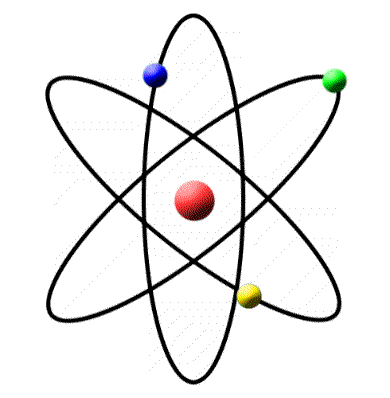If the binding energy of ground state electron in a hydrogen atom is $136 eV$, then, the energy required to remove the electron from the second excited state of $Li ^{2+}$ will be : $x \times 10^{-1} eV$. The value of $x$ is
If the binding energy of ground state electron in a hydrogen atom is $136 eV$, then, the energy required to remove the electron from the second excited state of $Li ^{2+}$ will be : $x \times 10^{-1} eV$. The value of $x$ is
Show Hint
Correct Answer: 136
Solution and Explanation
Top Questions on Bohr's model of hydrogen atom
- The frequency of revolution of the electron in Bohr’s orbit varies with \( n \), the principal quantum number as:
- JEE Main - 2025
- Physics
- Bohr's model of hydrogen atom
- What is the meaning of stationary orbit of atom? Deriving formula for the energy of the electron in the stationary orbit of the hydrogen atom, mention its relation with the radius of the orbit of electron.
- UP Board XII - 2025
- Physics
- Bohr's model of hydrogen atom
- Energy of electron in the \(n\)th orbit of hydrogen atom is \( E_n = \frac{-13.6}{n^2} \, \text{eV} \). Draw the energy level diagram for hydrogen atom and show the transition for lines of Balmer and Paschen series.
- UP Board XII - 2025
- Physics
- Bohr's model of hydrogen atom
- If the circumference of the nth orbit of an electron is \(S\) and the corresponding de Broglie wavelength of the orbit is \(\lambda\), then on the basis of Bohr's atom model, prove that \(S = n\lambda\).
- UP Board XII - 2025
- Physics
- Bohr's model of hydrogen atom
- In hydrogen atom, the kinetic energy of electron in an orbit of radius \( r \), is given by:
- UP Board XII - 2025
- Physics
- Bohr's model of hydrogen atom
Questions Asked in JEE Main exam
- The value of \( (\sin 70^\circ)(\cot 10^\circ \cot 70^\circ - 1) \) is:
- JEE Main - 2025
- Trigonometric Identities
- Ice at \( -5^\circ C \) is heated to become vapor with temperature of \( 110^\circ C \) at atmospheric pressure. The entropy change associated with this process can be obtained from:
- JEE Main - 2025
- Thermodynamics
- Let C be the circle of minimum area enclosing the ellipse E: \( \frac{x^2}{a^2} + \frac{y^2}{b^2} = 1 \) with eccentricity \( \frac{1}{2} \) and foci \( (\pm 2, 0) \). Let PQR be a variable triangle, whose vertex P is on the circle C and the side QR of length 29 is parallel to the major axis and contains the point of intersection of E with the negative y-axis. Then the maximum area of the triangle PQR is:
- JEE Main - 2025
- Coordinate Geometry
- Let circle $C$ be the image of
$$ x^2 + y^2 - 2x + 4y - 4 = 0 $$
in the line
$$ 2x - 3y + 5 = 0 $$
and $A$ be the point on $C$ such that $OA$ is parallel to the x-axis and $A$ lies on the right-hand side of the centre $O$ of $C$.
If $B(\alpha, \beta)$, with $\beta < 4$, lies on $C$ such that the length of the arc $AB$ is $\frac{1}{6}$ of the perimeter of $C$, then $\beta - \sqrt{3}\alpha$ is equal to: 0.01 mole of an organic compound (X) containing 10% hydrogen, on complete combustion, produced 0.9 g H₂O. Molar mass of (X) is ___________g mol\(^{-1}\).
- JEE Main - 2025
- Organic Chemistry
Concepts Used:
Atoms
- The smallest unit of matter indivisible by chemical means is known as an atom.
- The fundamental building block of a chemical element.
- The smallest possible unit of an element that still has all the chemical properties of that element.
- An atom is consisting of a nucleus surrounded by one or more shells of electrons.
- Word origin: from the Greek word atomos, which means uncuttable, something that cannot be divided further.
All matter we encounter in everyday life consists of smallest units called atoms – the air we breath consists of a wildly careening crowd of little groups of atoms, my computer’s keyboard of a tangle of atom chains, the metal surface it rests on is a crystal lattice of atoms. All the variety of matter consists of less than hundred species of atoms (in other words: less than a hundred different chemical elements).

Every atom consists of an nucleus surrounded by a cloud of electrons. Nearly all of the atom’s mass is concentrated in its nucleus, while the structure of the electron cloud determines how the atom can bind to other atoms (in other words: its chemical properties). Every chemical element can be defined via a characteristic number of protons in its nucleus. Atoms that have lost some of their usual number of electrons are called ions. Atoms are extremely small (typical diameters are in the region of tenths of a billionth of a metre = 10-10 metres), and to describe their properties and behaviour, one has to resort to quantum theory.